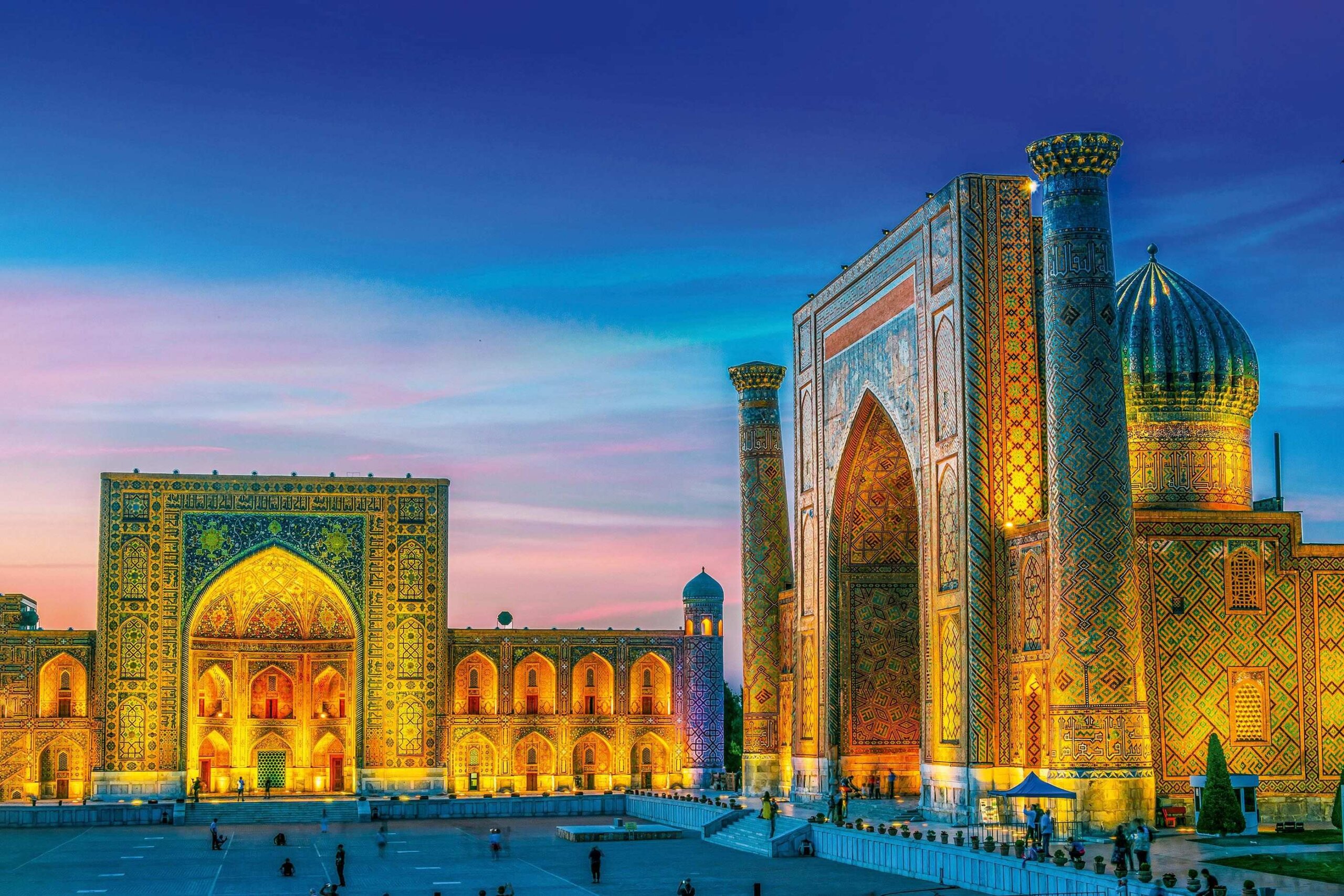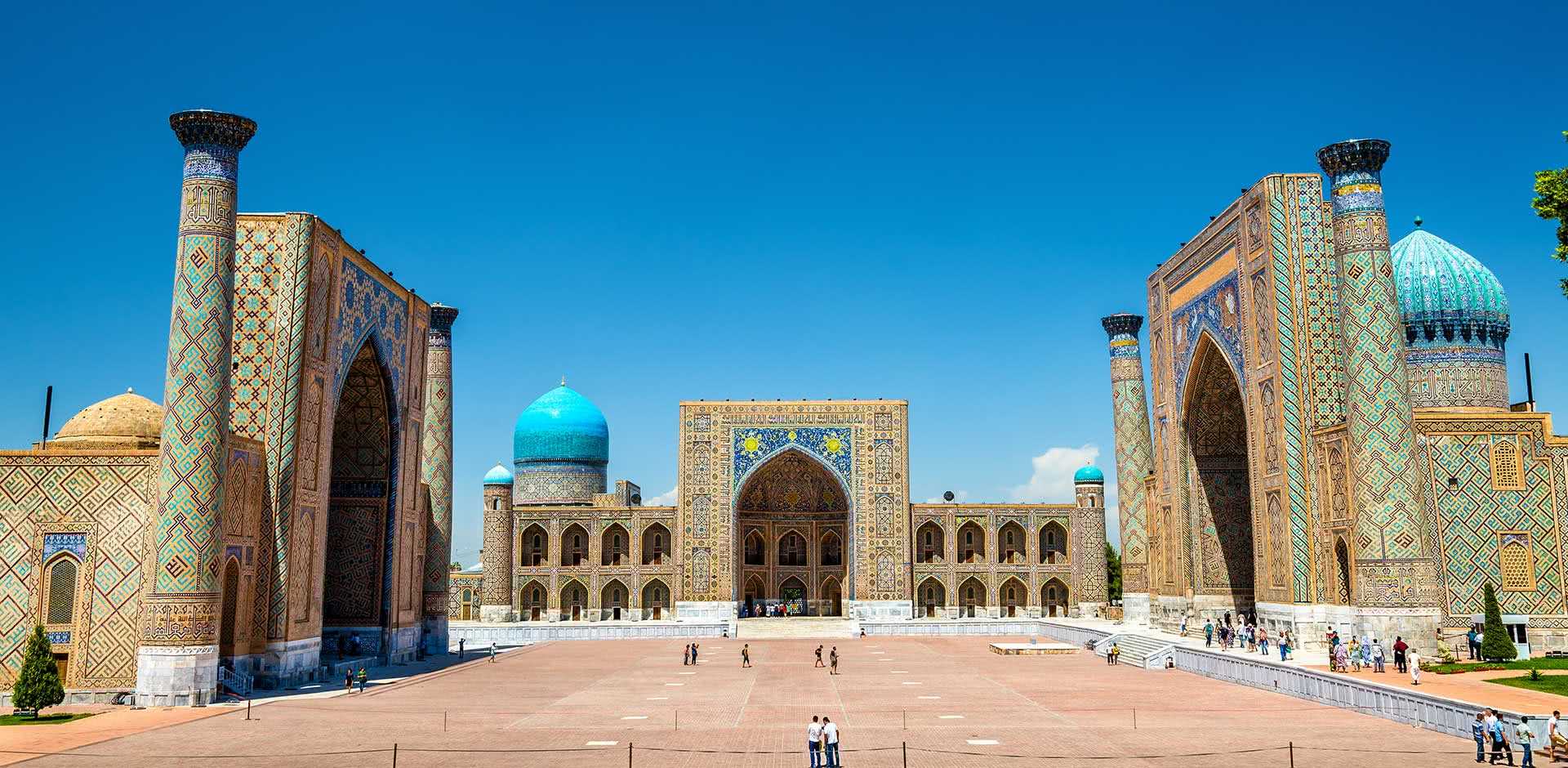



Samarkand is a city in Uzbekistan known for its mosques and mausoleums. It's on the Silk Road, the ancient trade route linking China to the Mediterranean. Prominent landmarks include the Registan, a plaza bordered by 3 ornate, majolica-covered madrassas dating to the 15th and 17th centuries, and Gur-e-Amir, the towering tomb of Timur (Tamerlane), founder of the Timurid Empire.
The best time to visit Samarkand, Uzbekistan, is during the spring (April to June) and fall (September to November). During these months, the weather is mild and pleasant, with daytime temperatures ranging from 20°C to 30°C (68°F to 86°F). These seasons also avoid the extreme heat of summer, when temperatures can soar above 40°C (104°F).
Spring and fall are ideal for exploring the city’s stunning historical sites, such as Registan Square, Shah-i-Zinda, and the Bibi-Khanym Mosque, without being overwhelmed by the heat. Additionally, the crowds tend to be fewer in these seasons compared to the summer peak.
How to Get There:
Samarkand is well-connected by both air and train, making it relatively easy to reach.
By Air: The Samarkand International Airport (SKD) has direct flights from major cities like Tashkent (the capital), Moscow, and Istanbul. From Tashkent, it’s a short 4-hour drive or a 2-hour train ride to Samarkand.
By Train: Samarkand is part of Uzbekistan’s excellent high-speed rail network. The Afrosiyob train connects Tashkent to Samarkand in about 2 hours, making it a convenient and scenic option.
By Road: You can also reach Samarkand by bus or private car from other major cities like Tashkent, Bukhara, or Khiva.
Top Attractions:
Registan Square: A stunning architectural ensemble of three grand madrasahs (Islamic schools). It’s one of the most iconic landmarks in Central Asia.
Shah-i-Zinda: A beautiful necropolis with ornate mausoleums, showcasing impressive tile work and the final resting place of many prominent historical figures.
Bibi-Khanym Mosque: One of the largest and most magnificent mosques built by Timur (Tamerlane) in the 15th century.
Gur-e-Amir Mausoleum: The tomb of Timur, featuring impressive architecture and intricate blue tilework.
Ulugh Beg Observatory: The site of one of the most advanced astronomical observatories of the 15th century.
Siab Bazaar: A lively, traditional market where you can experience local culture, shop for souvenirs, and try traditional food.
Activities to Do:
Explore Historical Sites: Visit Samarkand’s UNESCO World Heritage sites like Registan Square, Bibi-Khanym Mosque, and Gur-e-Amir Mausoleum.
Traditional Cooking Classes: Learn how to make plov (a traditional Uzbek rice dish), samsa (savory pastries), and other regional specialties.
Visit the Ulugh Beg Observatory: If you're into history or astronomy, the observatory is a fascinating place to explore.
Stroll Through the Bazaars: Spend time at Siab Bazaar for an authentic market experience, where you can buy spices, dried fruits, nuts, and more.
Take a Silk Road Tour: Experience the ancient trade routes by visiting nearby towns such as Bukhara and Khiva.
Accommodation:
Samarkand offers a range of accommodation options catering to different budgets.
Luxury:
Registan Plaza Hotel: A modern hotel offering luxury amenities and close proximity to the main attractions.
Shah-i-Zinda Hotel: Near the historical sites, with elegant decor and comfortable rooms.
Mid-Range:
Hotel Grand Samarkand: A comfortable, mid-range hotel with great service and proximity to key sights.
Samarkand Business Hotel: An affordable option with good amenities.
Budget:
B&Bs and Guesthouses: Numerous guesthouses and smaller hotels are available, particularly around the Registan area, offering budget-friendly options.
Food and Restaurants:
Plov: The national dish of Uzbekistan, a rich rice dish with lamb, carrots, and spices, often served in large communal portions.
Samsa: A flaky, savory pastry filled with meat or vegetables.
Shashlik: Grilled skewers of marinated meat, often served with flatbread.
Lagman: A traditional noodle dish with vegetables and meat, served in a savory broth.
Top restaurants include:
Samarkand Restaurant: A great place to try traditional Uzbek dishes, especially plov and samsa.
Bukhara Restaurant: Known for its classic Uzbek cuisine and warm ambiance.
Karimbek: A top choice for a blend of Central Asian and international dishes.
Local Culture:
Hospitality: Uzbek people are renowned for their warmth and hospitality. It’s common for locals to offer tea or food to guests.
Music & Dance: Traditional Uzbek music, including maqom (classical music), and vibrant dance performances are often part of local festivals and cultural events.
Language: The official language is Uzbek, but Russian is also widely spoken. Learning a few basic phrases in Uzbek can be appreciated.
Religious Practices: Uzbekistan is predominantly Muslim (Sunni), and you may observe locals practicing daily prayers and attending mosques, especially in cities like Samarkand.
Crafts: Samarkand is known for its beautiful handicrafts, such as carpets, ceramics, and silk. Visitors often take home souvenirs that showcase the craftsmanship of local artisans.